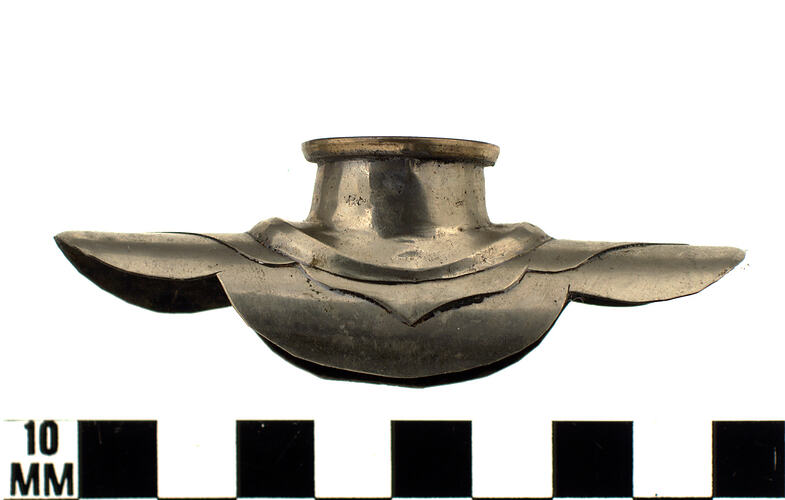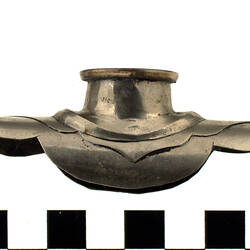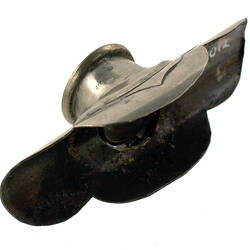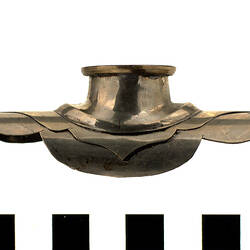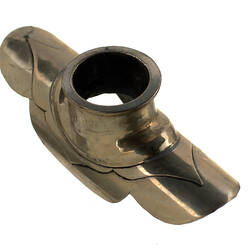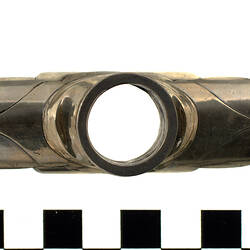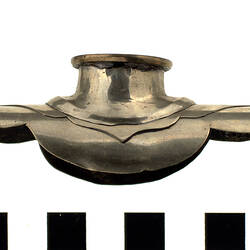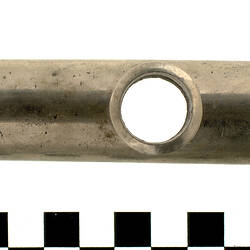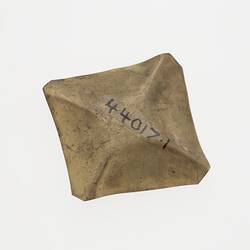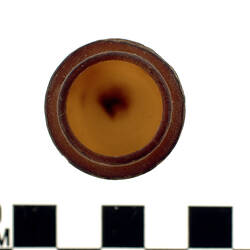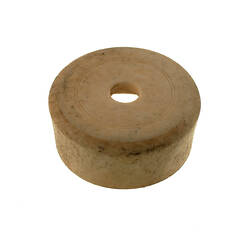Summary
One of a set of seven opium pipe mounts which are part of a group of opium related objects obtained in a raid on Chinese premises by investigating officers from the Victorian Customs Department circa 1905-1930. Opium use was widespread in China between the 17th and 19th Centuries with the British East India Company importing large quantities of the drug. Chinese attempts to ban the opium trade and resistance against the foreign intervention it represented culminated in the Opium Wars of the early to mid-19th Century when force of arms ensured that Chinese ports remained open to opium.
Opium smoking followed Chinese migrants overseas, with the activity providing a means of relaxation and social interaction for a largely male community, who were often ostracised from the wider community. In 1867, a census of Chinese settlements in regional Victoria recorded at least 80 opium shops in 9 centres across regional Victoria. Opium smoking was legal in Victoria until 1905, although prior to this those who failed to pay import duties risked having supplies of opium confiscated.
In the 1950s Victorian Customs Officers were still conducting opium raids with officer Fred Steed recalling a raid in Little Bourke Street, Melbourne: 'We would congregate up the top end of Little Bourke Street and walk slowly down...We knew they were smoking because you could smell it...You'd come up the alley and pull a string that opened the door...We went upstairs as fast as we could, forced open the door and saw these poor devils all smokin' in there. They're all huddled up, you know. They get very cold, very cold smokin'. And they stand on their heads, oh, it's marvellous the things they do...The manager...a fellow named Mahchow, was most surprised to see us. He said "oh well, oh well". That's all he said.'
Physical Description
Metal opium pipe mount. The main body of the mount is rounded to fit a pipe, and there is a circular hole at the top where the ceramic bowl of the pipe would be placed.
More Information
-
Collecting Areas
Leisure, Migration & Cultural Diversity, Sustainable Futures
-
Acquisition Information
Donation from Victoria: Customs & Excise Department, 05 Jan 1939
-
Place & Date Used
-
Other Association (See Comments)
Australia: Customs & Excise Department, Victoria, Australia, circa 1905-1930
Obtained in a raid on Chinese premises by investigating officers from the Victorian Customs Department -
Classification
Recreation & tourism, Substance use - opiates, Smoking equipment
-
Category
-
Discipline
-
Type of item
-
Overall Dimensions
8.2 cm (Length), 2.4 cm (Width), 2.9 cm (Height)
-
Exhibition Collection Management
8.2 mm (Length), 2.4 mm (Width), 2.9 mm (Height)
-
Keywords
Chinese Communities, Chinese Immigration, Customs Houses, Immigration, Narcotic Drug Usage, Opium
